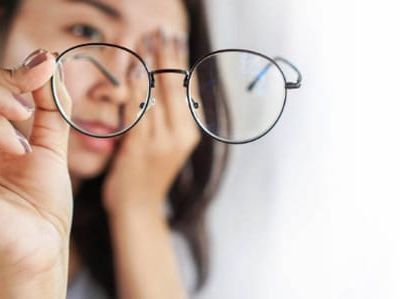Lifestyle Implications of Myopia
Myopia (short-sightedness) is a common refractive error affecting millions worldwide. With increases in screen time and sedentary lifestyles, the prevalence of myopia has been on the rise, especially among children and teenagers. Myopia affects an individual’s ability to see far clearly. This can lead to difficulties in various aspects of life including driving, participating in sports or even recognising faces at a distance. The constant need for glasses or contact lenses to see far well can also be bothersome and costly for some.
Various inconveniences and issues faced by individuals with myopia include:
- In school settings, students may experience difficulty reading notes on a whiteboard or screen resulting in not keeping up with schoolwork and poor academic performance.
- In work settings, myopia can affect job performance, especially in jobs that require good far vision such as driving or operating heavy machinery.
- In sports settings that require tracking fast-moving objects or anticipating the movements of other players, myopia may lead to misjudging distances, missing cues or slower reactions to changes.

There are several eye health concerns associated with myopia especially those with high myopia:
Increased risk of retinal detachment – The retina is the light-sensitive tissue lining the back of the eye. In high myopes, the retina is stretched thin and is more prone to tearing. Retinal detachment occurs when the retina is separated from the back of the eye and can lead to vision loss if untreated.
Higher risk of glaucoma – Glaucoma is a condition where the eye pressure is too high. In severe cases, it damages the eye’s optic nerve which carries visual information from the eye to the brain resulting in irreversible vision loss.
Early formation of cataracts – Cataracts occur when there is a clouding of the eye’s natural lens which sits behind the iris and pupil. Those with high myopia have a higher chance of developing cataracts at an earlier age.
Macular degeneration – The macula is part of the retina responsible to provide sharp central vision.
Choroidal neovascularisation – Abnormal blood vessels may grow under the retina leaking blood and fluid resulting in vision distortion.
As myopic individuals experience difficulty looking at far objects clearly, their eyes will need to work harder to focus which can lead to eye strain, fatigue and headache. Some ways to help relieve these issues include:
- Using prescription glasses or contact lenses will help reduce eye strain by allowing the eyes to focus properly.
- Take short breaks in between close-up tasks like reading a book or looking at screens/mobile phones and look far away for about 20 minutes.
- Practise simple eye exercises like blinking or rolling the eyes.
- Have proper and adequate lighting when reading or doing close-up work.
- Use an anti-glare screen protector for mobile phones or computers.
- Increasing outdoor activities, especially in bright light has been shown to slow down myopia progression. Aim for 2 to 3 hours of outdoor time per day.

Common treatments for myopia:
- Glasses or contact lenses – The most common method to correct myopia.
- Orthokeratology (Ortho-k) contact lenses – It is specially designed to reshape the cornea to be used at night so glasses and contact lenses are not required in the daytime.
- Using low-dose atropine eyedrops has shown to slow down myopia progression with few side effects in children. This works by temporarily paralysing the ciliary muscles in the eye to slow down the elongation of the eye which contributes to myopia progression.
- Refractive surgery (LASIK, epi-LASIK and implantable contact lens) is a permanent surgical option for those who want to be free from glasses and contact lenses.
Contact us at +65 6694 1000 or manager@eyemax.sg if you like to consult an eye doctor for issues relating to myopia.
